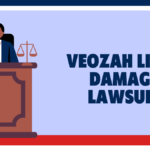The Suboxone tooth decay lawsuit has emerged as one of the most significant pharmaceutical lawsuits in recent years, affecting thousands of patients who trusted this medication to help them overcome opioid addiction. What was meant to be a path to recovery has instead led to devastating dental consequences for many users, resulting in extensive legal action against the drug’s manufacturers.
What is Suboxone?
Suboxone is a prescription medication approved by the FDA in 2002 for treating opioid use disorder (OUD). It contains two active ingredients:
- Buprenorphine: A semi-synthetic opioid that helps reduce withdrawal symptoms and cravings
- Naloxone: An opioid antagonist that blocks the effects of other opioids and helps prevent misuse
Suboxone is available in two forms: sublingual tablets and sublingual films that dissolve under the tongue. The film version, which became the focus of the litigation, was designed to be more difficult to abuse and became the preferred formulation.
The Core Problem: Severe Dental Damage
The central issue in the Suboxone lawsuits is the medication’s devastating effect on users’ teeth. Patients who took Suboxone as prescribed have reported:
- Severe tooth decay and erosion
- Multiple tooth extractions
- Root canal procedures
- Need for crowns, bridges, and dentures
- Chronic oral pain
- Complete tooth loss requiring full dental reconstruction
Why Does Suboxone Damage Teeth?
The dental damage occurs due to several factors:
- High Acidity: Suboxone has a pH of 3.4 when dissolved, making it highly acidic. Tooth enamel begins to demineralize when exposed to pH levels below 5.5.
- Sublingual Administration: The medication is placed under the tongue, creating prolonged contact with teeth and oral tissues.
- Dry Mouth (Xerostomia): Suboxone reduces saliva production, which normally helps neutralize acids and protect teeth.
- Extended Use: Many patients use Suboxone for months or years, creating continuous exposure to these harmful conditions.
The Legal Foundation: Failure to Warn
The lawsuits against Suboxone manufacturers are primarily based on “failure to warn” claims, arguing that:
- Manufacturers knew or should have known about the dental risks
- No adequate warnings were provided to patients or healthcare providers
- Patients were deprived of the ability to make informed decisions
- Preventive measures could have been taken if proper warnings existed
Early Evidence of Dental Problems
The manufacturers had clear evidence of dental risks years before adding warnings:
2012 Harvard Study: A case report published by Harvard Medical School documented severe dental deterioration in a patient after 18 months of Suboxone use.
2013 Follow-up Study: Harvard researchers published a case series of 11 patients who experienced significant dental health decline after starting buprenorphine treatment.
Despite this mounting evidence, manufacturers didn’t add dental warnings until January 2022—nearly a decade later.
Current Status of the Litigation (August 2025)
Multidistrict Litigation (MDL)
The Suboxone cases have been consolidated into an MDL (MDL No. 3092) in the U.S. District Court for the Northern District of Ohio, under Judge J. Philip Calabrese. As of August 2025:
- Over 896 pending cases in the federal MDL
- Additional cases continue to be filed regularly
- More than 10,000 total lawsuits have been filed across federal and state courts
Recent Key Developments
July 2025: The MDL judge held a comprehensive status conference addressing:
- Document exchange procedures
- Deposition protocols
- Timeline for collecting medical records
- Preparation for bellwether trials
Bellwether Trial Protocol: The court has established a structured process for selecting test cases:
- 500-member Records Collection Pool
- 100 cases for Core Discovery Pool
- 50 cases for final Core Discovery
- 15 cases for Trial Pool
- 4 final cases for bellwether trials
Key Defendants
Indivior Inc.
The primary defendant, Indivior is the pharmaceutical company that manufactures and markets Suboxone. Originally part of British company Reckitt Benckiser, Indivior became an independent public company in 2014.
Previous Legal Troubles
Indivior has a history of legal issues:
- 2019: Federal indictment for illegal marketing scheme
- 2023: $102.5 million settlement with 41 states for monopolistic practices
- Executive convictions: Former CEO and medical director faced criminal charges
Aquestive Therapeutics Inc.
A New Jersey-based pharmaceutical company that jointly developed Suboxone film with Indivior.
Who Qualifies for a Suboxone Lawsuit?
To be eligible for a Suboxone tooth decay lawsuit, you typically need:
Basic Requirements:
- Used Suboxone film (sublingual strips) for opioid addiction treatment
- Suffered dental injuries including decay, erosion, or tooth loss
- Medical documentation showing the extent of dental damage
- No significant pre-existing dental problems
Injury Severity Guidelines:
Most attorneys now require more severe injuries, typically:
- Three or more tooth extractions
- Multiple crowns or root canals
- Significant dental reconstruction
- Full or partial dentures due to tooth loss
Time Considerations:
- Statute of limitations varies by state (typically 2-3 years)
- Discovery rule may apply if you recently learned about the connection
- Filing deadlines are approaching in many states
Expected Settlement Amounts
Current Projections:
Legal experts estimate settlement values between $50,000 to $150,000 for typical cases, with variations based on:
- Severity of dental damage
- Number of extractions required
- Cost of ongoing dental treatment
- Impact on quality of life
- Strength of medical evidence
Trial Verdicts:
If cases go to trial instead of settling, verdicts could potentially exceed $1 million including punitive damages, given the evidence of corporate knowledge and failure to warn.
Settlement Timeline:
Most legal experts predict a global settlement by late 2025 or early 2026, coinciding with statute of limitations deadlines that would limit new case filings.
Why No Settlement Yet?
Several factors explain the delay in reaching a settlement:
- Strategic Delay: Indivior benefits from waiting until statute of limitations deadlines approach, limiting new case filings
- Case Volume Management: Early settlement would trigger a rush of additional claims
- Bellwether Trial Pressure: Companies typically don’t settle until facing imminent trial dates
- Financial Risk Assessment: Indivior is still evaluating its total exposure across all pending cases
The Science Behind the Damage
Oral Chemistry
- Normal mouth pH: 6.2-7.0 (slightly acidic to neutral)
- Suboxone pH: 3.4 (highly acidic)
- Enamel damage threshold: pH below 5.5
Mechanism of Damage:
- Acidic Suboxone film dissolves under tongue
- Acid exposure weakens tooth enamel
- Reduced saliva production compounds the problem
- Prolonged daily use creates continuous acid exposure
- Irreversible enamel loss leads to decay and tooth loss
FDA Action and Current Warnings
2022 FDA Safety Communication
In January 2022, the FDA finally issued a public safety warning about Suboxone’s dental risks, leading to updated product labels that now include warnings about:
- Tooth decay and loss
- Oral infections
- Need for dental monitoring
- Preventive care recommendations
Recommended Preventive Measures:
- Rinse mouth with water after each dose
- Wait at least one hour before brushing teeth
- Use fluoride toothpaste and mouthwash
- Schedule regular dental checkups
- Stay hydrated to combat dry mouth
Legal Process and What to Expect
Filing a Claim:
- Consultation: Contact a qualified attorney for case evaluation
- Medical Records: Gather dental and medical documentation
- Documentation: Prove Suboxone use and resulting dental damage
- Legal Filing: Attorney files lawsuit in appropriate court
Discovery Phase:
- Collection of medical and pharmacy records
- Expert witness testimony
- Corporate document review
- Depositions of key witnesses
Resolution Options:
- Global Settlement: Compensation for all qualifying claimants
- Individual Trials: Higher potential awards but more risk
- Bellwether Results: May influence overall settlement negotiations
Important Considerations
Statute of Limitations
Time limits for filing vary by state:
- Two-year states: May have deadlines approaching in 2025
- Three-year states: Generally more time to file
- Discovery rule: Clock may start when you learned of the connection
Legal Costs
Most attorneys handle these cases on a contingency fee basis, meaning:
- No upfront costs to clients
- Attorney fees only paid if case is successful
- Typically 33-40% of any settlement or verdict
Realistic Expectations
- Litigation process can take several years
- Not all cases will qualify for compensation
- Settlement amounts vary based on individual circumstances
- Strong medical documentation is essential
The Human Impact
The Suboxone tooth decay litigation represents more than just legal proceedings—it affects real people who:
- Trusted their treatment plan and followed medical advice
- Fought to overcome addiction and rebuild their lives
- Now face additional health challenges due to dental damage
- Struggle with confidence and self-image due to tooth loss
- Bear significant financial burdens for dental reconstruction
Many victims describe feeling betrayed by a system they trusted, having made the difficult decision to seek treatment for addiction only to face unexpected and severe dental consequences.
Moving Forward
For Current Suboxone Users:
- Don’t stop taking Suboxone without consulting your doctor
- Implement preventive dental care immediately
- Schedule regular dental checkups
- Document any dental changes with your healthcare provider
For Those Considering Legal Action:
- Act quickly due to approaching statute of limitations deadlines
- Gather medical and dental records documenting your treatment and injuries
- Consult with experienced attorneys who handle pharmaceutical litigation
- Be prepared for a potentially lengthy legal process
Conclusion
The Suboxone tooth decay litigation represents a significant failure by pharmaceutical companies to prioritize patient safety over profits. While Suboxone has helped many people overcome opioid addiction, the lack of adequate warnings about dental risks has caused unnecessary suffering and financial hardship for thousands of patients.
As the litigation progresses through 2025, victims of Suboxone-related dental damage may finally see justice through financial compensation that acknowledges the harm they’ve suffered. However, the most important lesson from this litigation is the critical need for complete transparency in pharmaceutical marketing and the importance of informed consent in medical treatment.
For those affected by Suboxone-related dental damage, understanding your legal rights and options is crucial. While no amount of money can fully restore lost teeth or undo the physical and emotional impact of this damage, holding manufacturers accountable through the legal system may prevent similar harm to future patients and provide some measure of justice for those who have suffered.
If you believe you may have a claim, it’s important to act quickly given the approaching statute of limitations deadlines and to consult with experienced legal professionals who can evaluate your specific situation and guide you through the complex litigation process.
Also Read:



